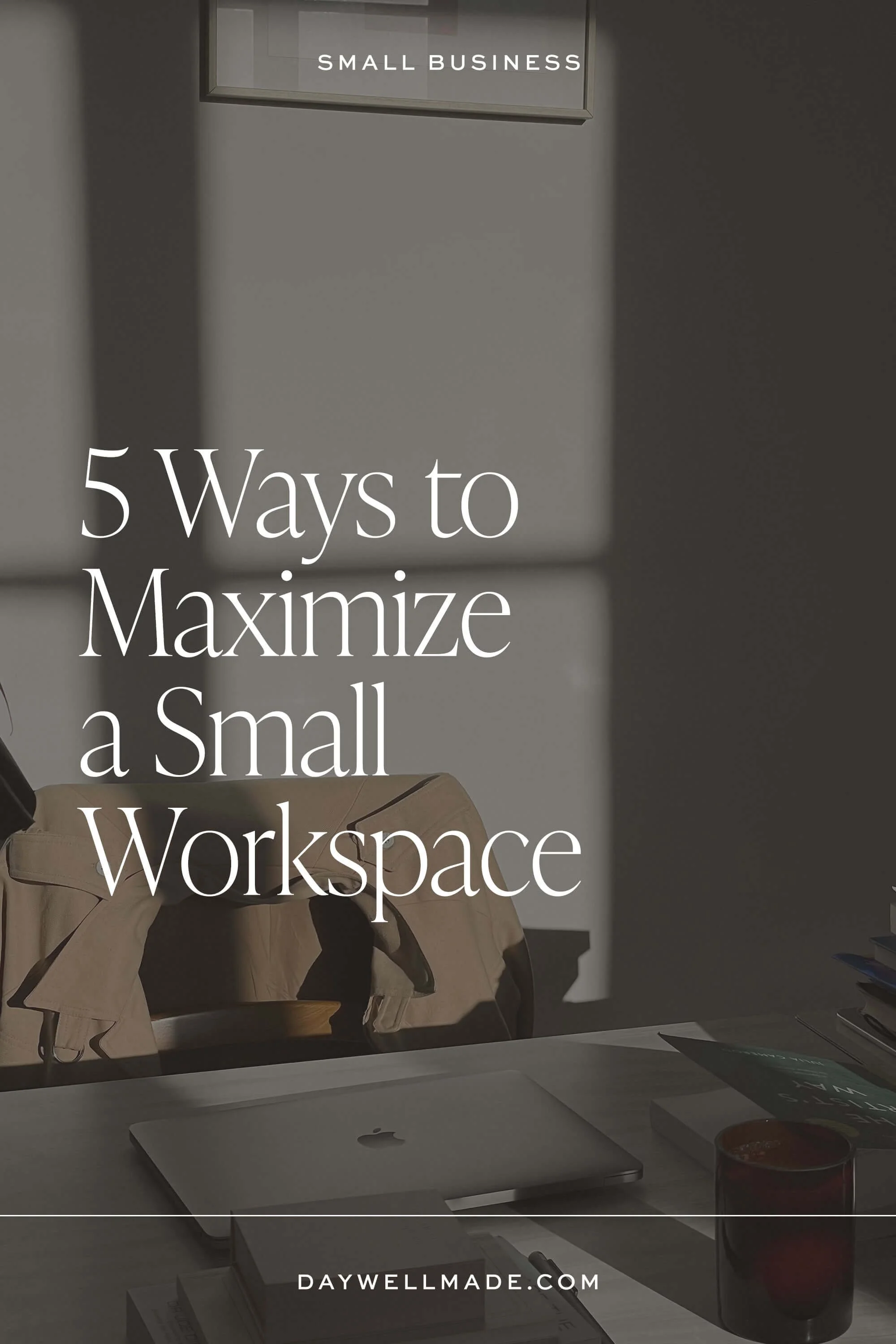5 Ways to Maximize a Small Workspace
When you work at home and space is super limited, a small workspace can be a VERY challenging space style to design.
…especially if your work involves balancing multiples types of tasks, projects, and functionality needs throughout the week. You might be dealing with:
- VERY little opportunity for storage
- No room to spread out for projects
- Lack of privacy
- Prone to endless distractions
Now for the good news!
Even a tiny workspace can be fully functional with the right solutions and smartly-designed setup.
Below are five of my favorite space strategy ideas for maximizing your small workspace for a more comfortable and functional setup.
01. Choose the right desk
For most types of work-related tasks, your desk is the main hub of your workspace; but when you have limited space to work with, it’s helpful to think about the surrounding environment of your workspace in addition to the functionality of the desk itself.
Opt for a desk with a clean look that won’t feel overbearing in your space and with built-in storage for a head start on storing all of your work supplies and materials.
02. Upgrade your ergonomic setup
Just because you’re working with a smaller space, doesn’t mean you need to forgo ergonomic considerations with your workspace.
Invest in a simple monitor riser to help raise your screen to eye level — ideally, the top 1/3 of your screen should be at eye level. Bonus points if the riser has built-in storage for additional space to stow away supplies!
A riser is a simple upgrade that can make a huge difference when it comes to neck pain and eye strain. This one is beautiful AND functional for storing extra pens, notepads, and other supplies:
03. Utilize the wall space efficiently
The wall space in an office setup is easily forgotten from a functionality standpoint, but can be a huge asset for small workspaces, especially!
Use the wall nearest your desk (ideally one beside or behind your desk) for vertical storage solutions and project work — think hanging pocket folders, pegboard organization, dry erase boards for brainstorming, etc.
Prevent this feature from looking out of place by choosing items that fit the aesthetic of your space. Here are a couple of wall solutions I love for a tiny workspace:
04. Clear the clutter
Clutter can have some benefits when it comes to creative work, but for more focused tasks — and depending on your own personal preference — a clutter-free space is the way to go. And YES, it’s completely possible in a small workspace!
My absolute favorite tip for cutting down on the clutter is this: avoid housing every single thing on your desktop by ensuring every item has a designated home within your workspace.
This means that when you’re done working at the end of the day, you KNOW exactly where that project folder goes, where to store those floating pens, and what to do with that open invoice.
As new types of materials enter your workspace on a regular basis, take the extra time to designate a home for those items. For instance, have a lot of temporary loose papers that end up on your desk daily? Start a hanging pocket folder or add a stackable paper organizer (like below) to help house these items with the intention of reviewing and clearing it out weekly.
Bonus tip: even the smallest visual distraction can make a small workspace look cluttered. Pay attention to cords and wires, and use either a cable organizational system (like the box below, an under-desk solution, or even just your basic cable ties) to keep your cords neatly tucked away.
05. Light the way
Natural light is always preferred in the workspace, but isn’t always available — especially when we’re working with a small space setup that has limited options for location in your home space.
If this includes your space, try supplementing with a standing lamp or even a wireless desk lamp for additional light support. Find one that not only matches the aesthetic of your space, but also supports multiple light modes for various times of day and types of work.
Brighter, cooler light works well for focused work and zoom calls, while softer, warmer light is perfect for early mornings and evening work — when your eyes and mind are in transition phase.
Designing a functional, ergonomic, beautiful workspace doesn’t have to be limited by the size of your space to begin with.
Smart solutions like these above for maximizing your storage and usable space will help ensure a happier, healthier work experience even in the tiniest of office setups!
Wait, you’ll love this —
The Day Well Made Digest is your Thursday coffee date with a friend (that’s me!) who happens to know a lot about marketing, has great taste in design, and always has the best book recommendations . . . delivered straight to your inbox.








